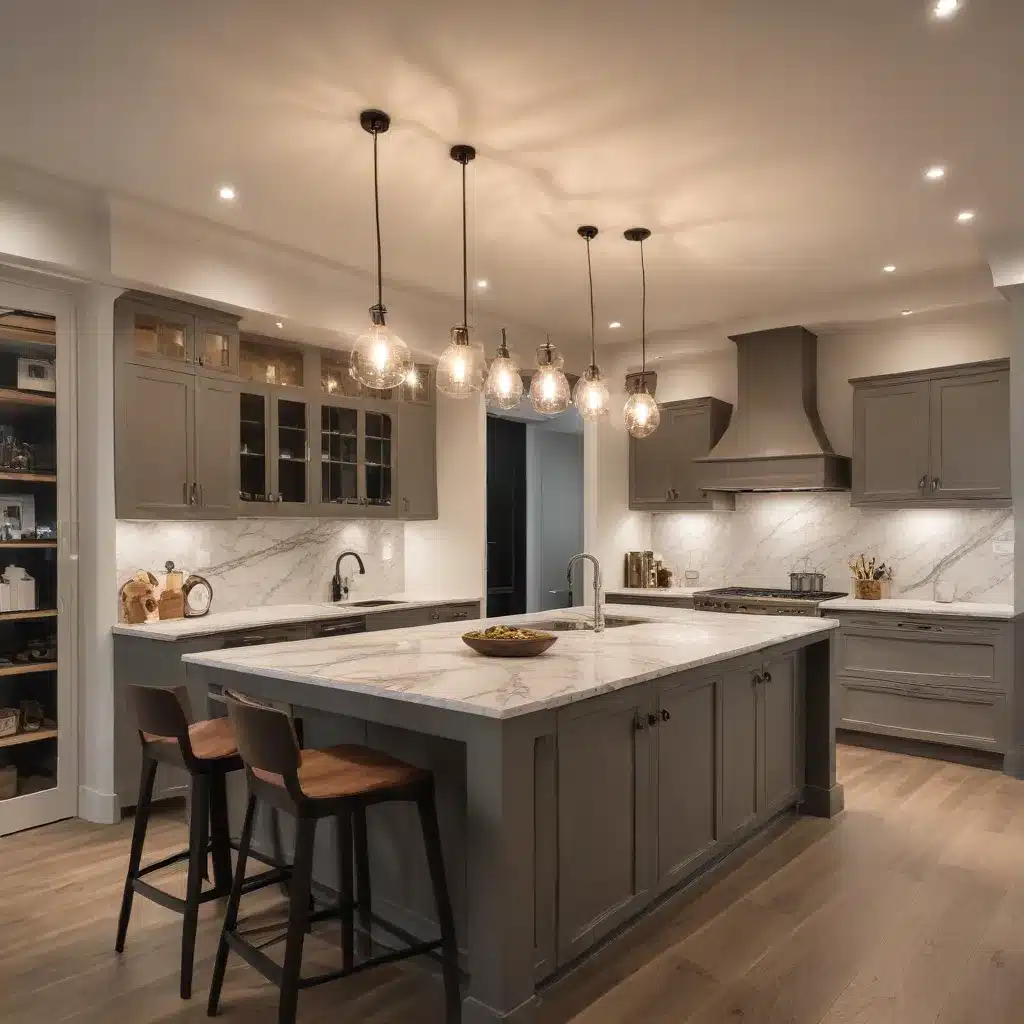
Investing in thoughtful lighting design is one of the most impactful yet often overlooked aspects of a successful whole-home renovation. Whether you’re overhauling your kitchen, refreshing your primary suite, or reimagining your family room, strategic lighting can dramatically elevate the form, function, and feel of every space. As an experienced home improvement consultant, I’m here to guide you through the process of crafting a cohesive, high-impact lighting plan for your renovation project.
Evaluating Your Lighting Needs
The first step in any lighting design is to thoroughly assess the specific needs of each room. Ask yourself questions like: Does this space require task lighting for cooking or reading? Do I need ambient lighting to set the mood? Should I incorporate decorative fixtures to add visual interest? Carefully considering the intended use and desired aesthetic of each area will help you determine the optimal lighting solution.
In the kitchen, for example, you’ll likely want a combination of recessed lighting for overall illumination, under-cabinet lighting for task-oriented prep work, and perhaps a statement pendant light or two over the island or dining table. Meanwhile, a cozy living room may benefit from a mix of floor lamps, table lamps, and sconces to create a layered, inviting atmosphere.
Choosing the Right Lighting Fixtures
Once you’ve mapped out your lighting requirements, it’s time to start selecting the fixtures. This is where many homeowners feel overwhelmed, faced with an endless array of styles, finishes, and technologies. My advice? Focus on quality over quantity. Invest in a few high-impact pieces that will serve as the anchors of your design, then supplement with more budget-friendly accents.
When it comes to finishes, aim for cohesion by choosing 2-3 complementary metal tones (e.g., satin brass, matte black, polished nickel) and carrying them throughout the space. This will help unify your lighting scheme and lend a sense of intentionality to the overall aesthetic.
Don’t forget to pay close attention to scale and placement. Recessed lights, for instance, should be positioned at least 7 feet off the ground to ensure proper clearance, while wall sconces should be installed at eye level or slightly above. Accurately measuring your spaces and consulting with a professional electrician can save you from costly mistakes down the line.
Integrating Lighting into Your Renovation
Lighting should be woven seamlessly into the fabric of your renovation, rather than an afterthought. Work closely with your designer or contractor to ensure that electrical planning and fixture selection are coordinated from the very beginning. This will allow you to maximize the impact of your lighting design and avoid frustrating last-minute adjustments.
If you’re tackling a DIY renovation, be sure to familiarize yourself with local building codes and safety regulations regarding electrical work. While certain tasks like installing pendant lights or track lighting may be within your capabilities, more complex jobs like running new wiring or upgrading your home’s electrical panel are best left to the professionals.
Coordinating Lighting with Interior Design
Beyond the functional considerations, your lighting design should also complement the overall aesthetic of your renovated spaces. Carefully selected fixtures can enhance architectural details, highlight cherished art or furniture pieces, and set the tone for the entire room.
For example, in a farmhouse-style kitchen, I might choose rustic-inspired pendant lights with opalescent glass shades to play up the home’s vintage charm. Conversely, a modern living room could benefit from sleek, minimalist recessed lighting and wall sconces with clean lines.
Incorporating Different Lighting Layers
Truly exceptional lighting design is all about balance and layers. By combining various types of lighting – task, ambient, and decorative – you can create depth, dimension, and visual interest that elevates the entire space.
Start with your foundation of overhead lighting, whether it’s recessed cans, semi-flush mounts, or a statement chandelier. Then, add in task lighting like under-cabinet fixtures or reading lamps to illuminate specific work areas. Finally, use accent lighting in the form of wall sconces, picture lights, or strategically placed floor lamps to highlight architectural features or create cozy, intimate moments.
Maximizing Energy Efficiency
As you plan your lighting scheme, be mindful of energy efficiency and sustainability. LED bulbs, for instance, offer a long-lasting, eco-friendly alternative to traditional incandescents, while motion sensors and dimmers can help you optimize energy usage throughout the day.
When selecting fixtures, look for the ENERGY STAR® label, which indicates they meet strict guidelines for energy efficiency. You can also explore solar-powered outdoor lights or smart home lighting systems that allow you to control your home’s illumination remotely.
Enhancing Lighting Flexibility
Gone are the days of “one-size-fits-all” lighting. Today’s savvy homeowners demand versatility and customization, and your renovation is the perfect opportunity to incorporate these features.
Dimmable lights, for instance, enable you to adjust the ambiance to suit your needs, whether you’re hosting a dinner party or winding down for the evening. Smart lighting systems, meanwhile, allow you to program, schedule, and even voice-control your home’s illumination from the convenience of your smartphone.
Optimizing Lighting for Functionality
While aesthetics are undoubtedly important, the true measure of successful lighting design lies in its ability to enhance the functionality of your renovated spaces. Whether you’re cooking, relaxing, or entertaining, the right lighting can make all the difference in your daily life.
In the kitchen, ample task lighting ensures you can clearly see what you’re chopping, mixing, and plating. In the bathroom, well-placed vanity lights provide the optimal illumination for grooming and self-care. And in the home office, a combination of overhead lighting and task lamps can help reduce eye strain and boost productivity.
Conclusion
Thoughtful, intentional lighting design is the secret ingredient that can take your whole-home renovation to the next level. By carefully evaluating your needs, selecting the right fixtures, and integrating lighting seamlessly into your spaces, you can create a transformative, cohesive, and highly functional living environment.
Ready to get started? Visit Reluctant Renovator for more expert tips, tricks, and inspiration to guide you through your upcoming renovation project.



